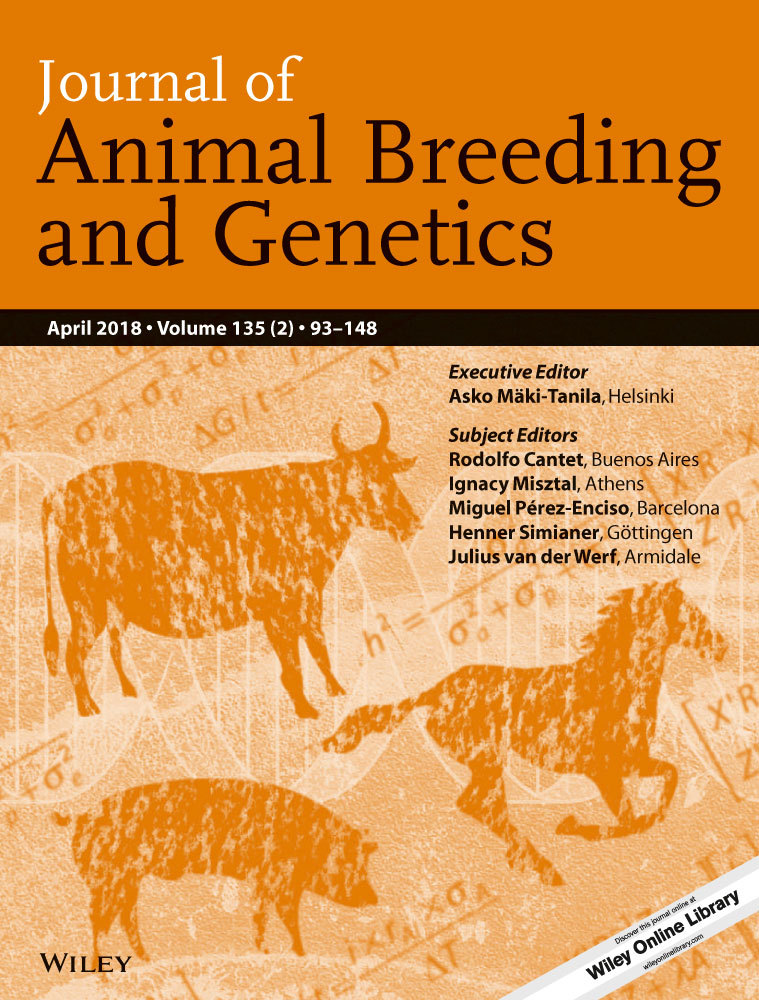Genomic selection—the final step or another step in an endless race?
Advances in scientific knowledge rely on technological innovation. In turn, new technologies stem from the advancement of knowledge. This coevolution is observed in genetics as in other scientific fields. But is it a virtuous circle or a headlong rush into the unknown?
Marker-assisted selection became feasible when microsatellite genotyping became affordable. Offering opportunities for precise and more rapid genetic gain, it was a revolution for genetic improvement strategies in livestock and plant species. However, the need for the costly calibration of marker effects at each generation has greatly restrained its use, and only a few wide-scale selection programs have been implemented (Boichard et al. Proc 7th WCGALP Comm no. 22-03).
The ability to simultaneously genotype tens or hundreds of thousands of markers at low cost arose from the development of SNP chips. Now, the linkage disequilibrium established by generations of historical recombinations can be exploited in selection, with the hypothesis that marker effects are stable over generations, dispensing with the need to re-estimate these effects year after year. This made it possible to launch genomic selection programs, provided that large reference populations were established to initiate the process. Being financially and technically robust, private dairy breeding companies changed their selection processes and embarked on the adventure with unprecedented speed and enthusiasm (Meuwissen et al. 2013 Ann Rev Anim Biosci 1: 221–237; Hayes et al. 2009 J Dairy Sci 92: 433–443). The picture is quite different for less privileged breeds and species for which large reference populations could not be established. Regardless, there is much hope for a smooth transition of the data being generated in the mainstream breeds to smaller populations, based on the strength of associations between closely linked loci detected by linkage disequilibrium. Unfortunately, evidence that the associations cannot be confirmed has accumulated over the last few years, and in addition, within a given breed, most of the contributing information in genomic evaluations is shown to originate from closely related individuals and not from historical linkage as described in the founding articles (Hozé et al. 2014 J Dairy Sci 97: 3918–3929).
Genome resequencing at low cost, only a promise five years ago, is now a reality. The 1,000 genomes and similar projects are outperformed. We can now have direct access to the pure basic information from which all genetic variability originates, such as the causal mutations (Daetwyler et al. 2014 Nat Genet 46: 858–865). Between-breed transferability of information should be feasible. Again, the reality is unfortunately less encouraging. A gene mutation can have a certain effect on a phenotype in one environment, but no effect or even the opposite effect in another environment. The environment is made of internal factors (rest of the genome exhibiting epistatic interactions with the gene containing the mutation) or external factors (farming conditions including feed and climate, such as conspecific animals’ social or indirect effects and the presence of pathogens). For instance, in sheep, the VRQ allele at the PrnP locus is associated with high sensitivity to classical scrapie but confers resistance to atypical scrapie (Saunders et al. 2006 J Gen Virol 87: 3141–3196). It is unrealistic to assume that the association of causal variants with phenotypes measured in one population in a certain environment would enable the prediction of the phenotypes of another population in a different environment.
Will a new coevolution cycle between innovation and knowledge break the deadlock? Several new areas of research have opened up and point to possible solutions. One possibility would be to transition from considering a single gene to gene networks. Because we would understand the mechanisms involved, gene network polymorphisms would form the new, more stable and predictable basis for phenotype variations. A second path relies on the use of recent advances in biotechnology with targeted genome editing to test associations that do not occur naturally (Jenko et al. 2015 Genet Sel Evol 47: 55). Another option is the development of methods using artificial intelligence techniques to process huge amounts of data, now foreseeable due to the ever increasing data storage capabilities and computation speeds (Libbrecht et al. 2015 Nature Rev Genet 16: 3321–3328). Whatever the case, to move forward, substantial amount of information will be needed, in particular phenotypes expressed in different environments. Biology is infinitely more complicated than the game of Go, and there is nothing to ensure at this stage that these new techniques will be able to predict with a high level of accuracy what phenotype an individual will express in a particular environment, based solely on its genome.
Nevertheless, genomic selection, when implemented with the appropriate technical and financial resources, already represents a major step forward for improving livestock populations. The enthusiasm of dairy breeding companies is the best proof for this. Its implementation, however, does not just accelerate the improvement of animal populations; it also unsettles the relationships between all stakeholders, from the farmer to the end customer, and opens up opportunities for changing the way progress is currently defined by widening the scope of possible developments. The marketing value of breeding animals, founded on breeders’ confidence in predicted genetic values, needs to include new assessment methods based on reference populations and various statistical methods. As for personal information retrieved from the Internet, data ownership issues, in particular for phenotypes, will need to be thought through and resolved. It seems likely that the use of omics in the human food production setting will create the same societal disapproval as GMOs and pesticides. However, the potential for widening the selection objectives provides opportunities to converge with the wishes of the end customers and regain consumers’ trust. An important issue for research on livestock selection stems from these potential developments, all of which call for rapid answers from the genetics and social sciences research communities.




